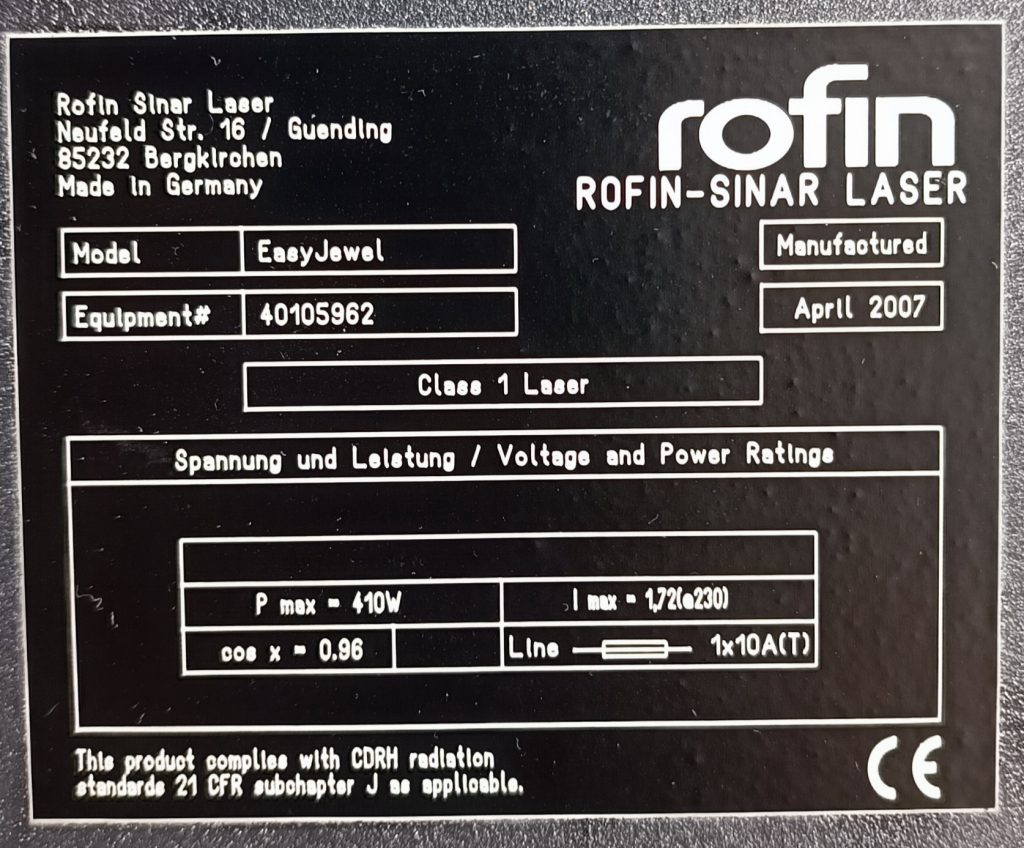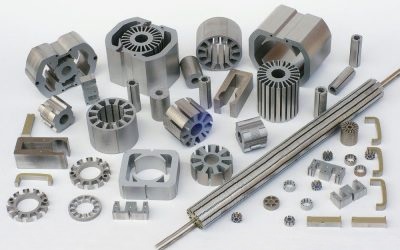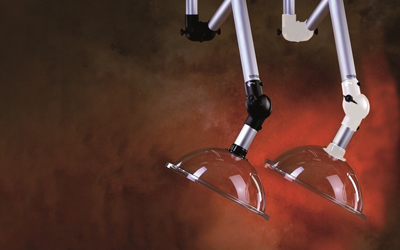Although laser processing of metals and plastics is a relatively clean process compared to other processing methods, it also produces dangerous fumes and dusts, the inhalation of which over a long period of time contributes to serious health problems. That is why it is so important to use appropriate filtration systems, which, if well chosen, are capable of separating more than 99.95% of the pollutants in the air.
The chronic burden of smoke and dust is also troublesome for machines and promotes breakdowns resulting in costly downtime, and/or decalibration, important especially in precision machining. From the entrepreneur’s point of view, these problems have a significant impact not only on the level of absenteeism, but also on the company’s economic performance reduced as a result of this absenteeism, lower precision machining and downtime.
At the same time, it should be noted that the extraction and filtration of laser smoke and dust is not a task that can be effectively performed by ordinary industrial vacuum cleaners. This is because their purpose is only to remove dirt after processing, and not – as in the case of filter systems – to separate hazardous substances from the air. Therefore, a suitably efficient fume and dust extraction and filtration system selected for the application should be taken into account already at the design stage of the future installation.
Laser technology and environmental law
This obligation is also anchored in Polish and EU law. Laser systems occupy a special place in it: for, on the one hand, they do not require a permit to operate from environmental protection authorities, and on the other – due to the possibility of negative impact on human health and the natural environment – they are to some extent subject to the control of these authorities. This is because the law stipulates that if the pollutants from the lasing process are not filtered, there is an obligation to report this fact and agree on the strategy with the Environmental Protection Inspectorate (Journal of Laws 2016 item 672).
This obligation is due to the fact that when lasering metals and plastics, the emission value of harmful gases and vapors far exceeds the permissible standards set forth in the Regulation of the Minister of the Environment of January 26, 2010 on reference values for certain substances in the air. This means that their prolonged inhalation has negative health consequences, including the development of cancer, genetic defects, as well as poisoning of the body.
Why are gaseous laser processing products so dangerous?
Airborne pollutants are generally divided into five groups ranked by size:
1) gases and vapors,
2) fine dust and smoke,
3) fine dust,
4) dust, and
5) solids.
In laser processing, we mainly deal with substances from the first two groups, i.e. process gases and smoke.

Process gases, mainly generated in the processing of organic materials such as plastics, wood, textiles and leather, consist of particles on the order of 0.0001-0.001 µm. Smoke particles (0.01 µm) resulting from the processing of metals and inorganic materials, such as glass and porcelain, are also slightly larger. Both groups have the ability to penetrate the lung barrier and enter the bloodstream via this route, effectively poisoning the body and causing dangerous gene and cell mutations. Hence, in the Ordinance of the Minister of Labor and Social Policy of June 6, 2014 on the highest permissible concentrations and intensities of factors harmful to health in the work environment, these fractions as respirable, i.e. penetrating the lungs, were considered particularly dangerous, and the upper limit of their concentration in the work environment was adopted – following EU legislation – as 3.00 mg/m3. Moreover, as of 2019, this limit is to be further reduced to 1.25 mg/m3.
The solution is to use a properly selected filtration system, i.e. one that, both in terms of filter type and capacity selection and location, fully meets the needs of the application. In doing so, all three aspects are crucial to the proper functioning of the system itself, which means that neglecting any of them will reliably lead to a reduction in the effectiveness of the contaminant filtration process.
Step 1: proper selection of filters
The set of filters that make up a filtration system is strictly dependent on the type of processing and the type of materials being processed. Therefore, when selecting them, it is best to consult experts in the field of filtration of contaminants generated in laser processing. Nevertheless, it is useful to know the basic principles in the division of filters and their usefulness in different types of processing.
Thus, as a standard, pre-filters and HEPA-type primary filters are used in devices that filter contaminants generated during the laser process. This set can be successfully used for processing all metals and inorganic materials. However, in the processing of plastics and other organic raw materials, it is necessary to additionally include an activated carbon filter, which captures the aforementioned process gases with the smallest particle diameter. This filter, in the case of ULT brand equipment, is either mounted in a single cassette with the HEPA filter or, in larger systems, as a separate filter cassette. On the other hand, in spark-generating applications, such as laser welding, an additional spark filter will prove indispensable, which captures sparks, preventing them from reaching other filters and causing uncontrolled ignition of the filtered mixture. After all, it should be realized that in the filtration process, both impurities stored on the filters and the filtered gas mixture itself, circulating through the system at high speeds, can be flammable.

Step 2: flow tailored to the application
The second issue to pay attention to is the maximum throughput of the system, which for ULT units ranges from 80 to 10,000 m3/h. To put it simply: this value determines the maximum contaminant flow rate that the system can effectively filter in 1 hour. This is important because in applications generating large amounts of pollutants, improper selection of the device’s power can result in a significant reduction in filtration efficiency, as well as increased failure rate of the extractor.
In addition to power, an important variable in this case is the type of filters used. In laboratory applications or single workpiece processing, where the amount of contaminants generated as a function of time is small, cartridge systems with replaceable filters are sufficient. Their advantages are smaller size, relatively high mobility and lower price of filters; disadvantages, on the other hand, are the need for regular replacement of filter cartridges, which, due to their small capacity, fill up quite quickly. Therefore, in high-volume production or on production lines, the use of cartridge systems is no longer profitable. Here it is much better to use cartridge filters, which are admittedly more expensive, but much more capacious, and – most importantly – thanks to the self-cleaning function, require much less frequent replacement. They are used in larger devices intended for stationary use at a given workstation.

Step 3: proper location of the extraction and extraction arms
Finally, it is worth remembering to arrange the layout of filtration equipment in such a way as to ensure maximum filtration efficiency at optimal cost. As evidenced by manufacturers of filtration systems, in most cases the best solution will be the use of local filtration, that is, implemented by a system of extractors, each of which serves one workstation. This is because the investment outlay for the organization of such a system will be incomparably less than the cost of building a central ventilation and filtration system, in which all contaminants are discharged into a single filtration unit. Individual extraction units are more mobile and flexible: they can be moved from place to place, and can be supplemented with additional filters if the type or parameters of treatment change. What’s more, they are also cheaper to operate, as they use much less electricity than their larger cousins, and are much more efficient – provided they are properly deployed.
Translated with www.DeepL.com/Translator (free version)
As evidenced by numerous examples from manufacturing practice, it is the correct location that is the most often underestimated aspect when installing extraction units. However, the belief that since we have bought the best, properly selected device, it must be almost one hundred percent effective is illusory and only works in the case of built-in machines, where contaminants are discharged through a connection directly connected to the extraction on the laser.
In open machines, the final filtration efficiency is a product of the distance of the extraction arm from the machining zone and the type of fixture, and thus – the ratio of captured contaminants to uncaptured contaminants. Indeed, studies show that doubling the distance of the fixture from the machining area results in four times the power requirement of the machine. Similarly, if you mount it at too high an angle to the direction of movement of the contaminants, the efficiency of their capture will significantly decrease. The same effect will result from using too narrow a fixture. This is because some of the dirt will escape to the sides.
In order not to make a mistake at the design stage of the installation, the final selection of the location and setting of the device is best left to the experts. Most often, in order to determine the basic requirements of the application, it is enough to fill out a short form (also available on our website), as well as attach a data sheet for the material to be processed. The latter will allow you to determine, among other things, whether it is a combustible raw material (and therefore whether you need to use a spark filter), and also – what is the mass of the generated dust and fumes. If their particles are heavier than air, they will fall downward, which will make the extraction mounted above the processing zone completely ineffective.






